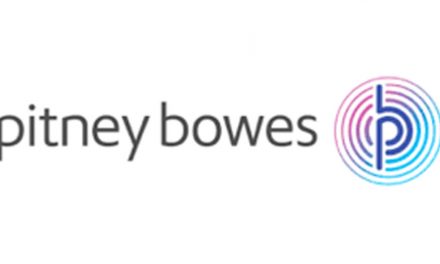
Pitney Bowes says ‘Snail mail’ is here to stay
To the casual observer, "snail mail" is doomed. Bills can be paid with a mouse click. Photographs, even lengthy PowerPoint presentations, arrive instantly by e-mail. But Pitney Bowes (PBI) doesn't believe it.
It is in the mail business, and revenue rose 18% from 2000 to 2003. The company ranks No. 383 on the Fortune 500, and its stock is up 14% during the past 12 months. Not bad for a company that appears to be selling the 21st century's version of buggy whips. Pitney Bowes is the world's largest maker of postage meters. It also goes on site at companies to operate mailrooms. It has contracts with the largest mass mailers, performing everything from envelope stuffing to using sophisticated software that keeps mailing lists accurate. Pitney Bowes CEO Michael Critelli, 55, talked with USA TODAY corporate management reporter Del Jones and warned businesses that they will lose opportunity if they believe snail mail is in its last stages.
Q: What was your reaction when you first heard the term snail mail? It must have made you shudder.
A: I first heard it in the late '90s during the dot-com era. We'd been doing research with the Institute for the Future since 1993 about how people use and value paper vs. electronic communications. The term snail mail oversimplifies a complex medium and reminds me that people do not completely understand what's in the mail. They don't think of the explosion of marketing material, packages and credit cards that they get in the mail. We've long thought that a normal and balanced reaction to the mail would return, and it has.
Q: People have long complained that junk mail wasted their time. Do you think they have a better opinion of junk mail having become increasingly annoyed with spam and phone solicitations?
A: First, I don't accept the term junk mail, not when someone has spent time perfecting and crafting a message. But getting to your point, mail has trustworthiness because it costs money to create it. It requires a physical address. There is an inherent lack of trust of e-mail because its point of origin can't be verified. It can be sent from outside the U.S. and from a desktop. Response rates on standardized black-and-white mail are declining. But mail that is high-quality, more personalized and in color gets higher response rates. The goal is to get people to open the mail. If you spend 15 cents for postage and just a couple of pennies for everything else, nobody opens it, and it's wasted.
Q: So snail mail isn't dying quickly, like the pony express, or slowly like film photography?
A: Certain mail will die out, and other categories will grow. The annual volume will probably stay at about 430 billion pieces. Consider the mail that comes into my home. Yes, we pay our bills electronically. But when I was growing up all the mail was addressed to my parents. My home gets about 30 pieces of mail a day, but just one-fifth is addressed to me. My three children get a great deal more. My son, who is 18, has received solicitations from universities for five years. I never got those when I was growing up. My 13-year-old son is a chess player, so he gets magazines and postcards informing him of tournaments and software. My 11-year-old daughter plays the harp and would be disappointed if she didn't get her magazine from the Harp Association. This shows the evolution of mail from general purpose and transactional to special interest. People who used to have a garage sale now sell on e-Bay, and they use the mail to ship. Mailed pharmaceuticals have grown explosively, as have mailed DVDs. Twenty years ago it was just J.C. Penney and Sears sending catalogs. My wife has a habit of giving small amounts of money to lots of charities, so she's on lots of lists.
Q: Do you think mail is responding to revolutionary changes brought on by e-mail like radio responded to TV?
A: That's a pretty good analogy. We do have headwinds, and we must reinvent ourselves. First-class transaction mail, which has been the bread and butter of our postage meter for 84 years, is declining and will continue to decline. But there are 9 million people employed in this industry that contributes $900 billion a year to GDP.
Q: Are companies under-using mail?
A: They are. Not that they should send more of it. In some instances the solution is to send less. For example, they can link their call centers to their mail centers so that they know when a customer has put a check in the mail. That way they don't have to waste money sending out a notice. The biggest single opportunity for companies of all sizes is not sending more mail, but using the mail they send out better. We call the bill a monthly appointment with the customer. You know they're going to open it. That's the time to include inserts or put messages directly on the bill or refer customers to a Web site. They could send a DVD or CD with the bill. It's all about connecting with the customer, cross selling or selling up, and it is not being used to the fullest degree.
Q: How will businesses be using mail in five years?
A: Mail will increasingly be scanned when it first arrives at a company and made digital so that multiple people have access. Digital mail can be read online and shot to an assistant. It can be archived. That's a positive outcome to the anthrax scare. Security is merely an added benefit, because you can have trained people opening the mail and you won't risk contamination.
Q: What is intelligent mail?
A: It's a 14-digit bar-coding system that identifies and tracks individual letters. It's already used on packages, and letter bar coding was launched by the Postal Service in 2002.
You can find out if the check is in the mail by putting a code on the reply envelope. For high volume it's inexpensive, but it's too expensive for low-volume mailers.
Q: Do you have a crystal ball for how businesses will be using mail in 10 or 50 years?
A: I would say with certainty that there will still be a lot of it around. Unless terrorism creates a complete lack of confidence in the package-delivery system, there will be more remote and global commerce.
Letter mail will always have its place, because you know that when somebody goes to the mailbox it's gotten inside the house.
Q: The mailroom traditionally handles corporate mail. In the future will mail also require the attention of information technology, marketing and other departments?
A: We're in the early stages of those linkages. There's a big opportunity there, but it's not happening to the degree that it should.
Q: Will the U.S. Postal Service one day be privatized?
A: I hope not. I'm against privatization. I've seen some bad effects in Europe where they've expanded far afield from their core business. With the universal service obligation the Postal Service shouldn't privatize, but it needs to outsource non-core functions to partners who can do them better. Privatization won't happen anytime soon. If anything, the politicians are interfering more with operations today than they were 10 years ago.










